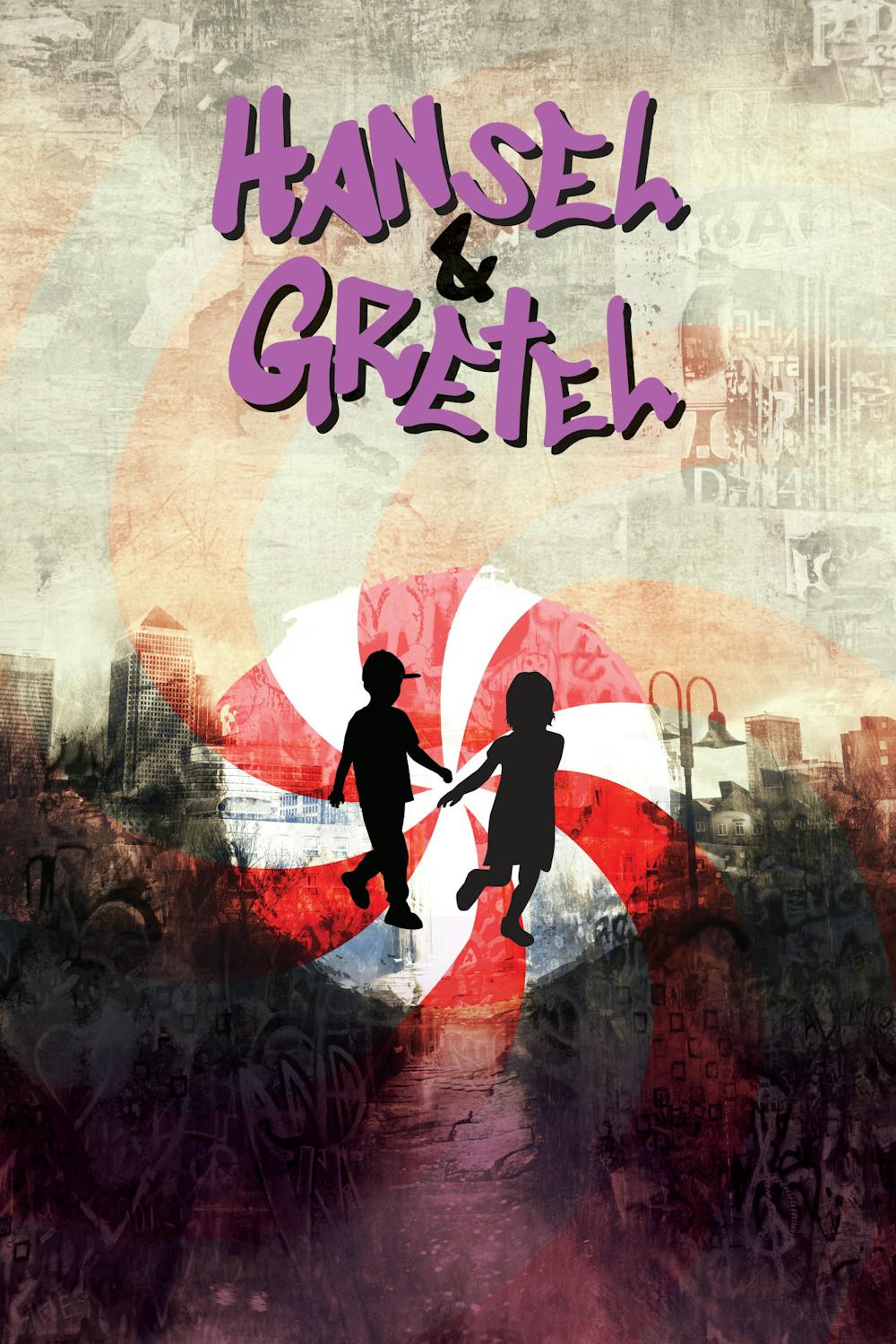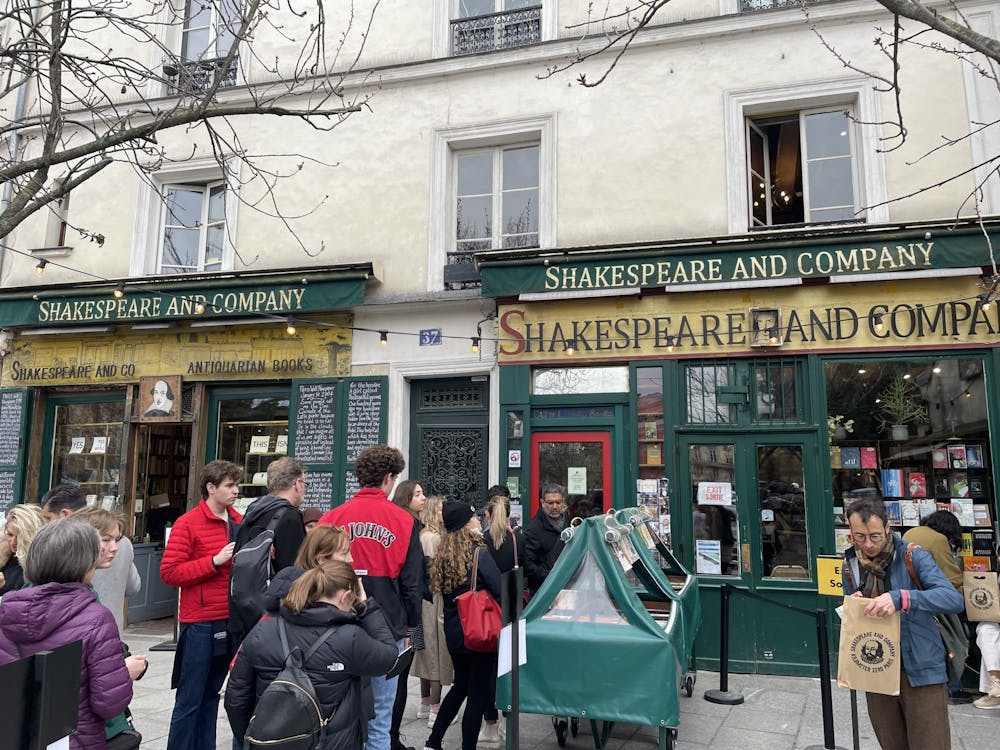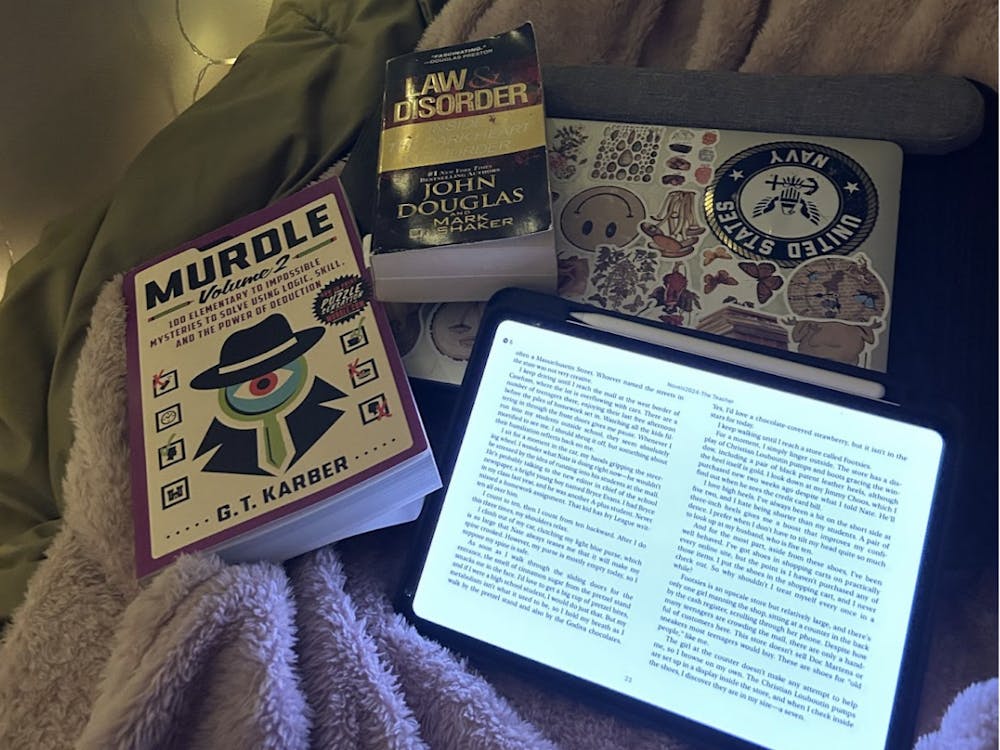This weekend, in the brightly lit Joe Byrd Hall, with covered windows and rows of limited seating, opera singers waltzed around a sparse set, which included a large brick fixture, a door without a wall and a simple card table. Members of the Peabody Symphony Orchestra — violinist Isabel Rushall, clarinetist Joelle Wong, pianist Abigail Wilemon and percussionist Johnny Barker playing a drum set behind a large acoustic shield — were conducted on the right by graduate assistant conductor of the Peabody Concert Orchestra, Ryo Hasegawa. Despite their classical training, the group more resembled a jazz quartet, with sweeping clarinet runs and enthusiastic tom-tom beats.
Peabody Opera Theatre and Peabody Symphony Orchestra performed a wonderful adaptation of the 19th-century opera Hansel and Gretel by Engelbert Humperdinck at Joe Byrd Hall this past Friday, Feb. 2. I was able to attend the 7:30 p.m. showing, which meant a whole different cast than the 4:30 p.m. performance but with the same score and story.
I must first talk about the music, as it was absolutely flawless. The classical vocal performances paired with heavy jungle beats and jazz solos created a clash of musical traditions that seemed so outrageous on paper yet absolutely thrived onstage. The more quirky, whimsical performance of the singers, with their bizarre facial expressions and direct communications with the audience, felt right at home with the wild yet controlled nature of the musicians. The musical adaptation by Nicholas Hersh was simply brilliant.
As for the story, the direction of the adapted libretto was apparent before you even walked into the performing hall. The front cover of the program, as well as the promotional photo on the Peabody Institute’s website, both designed by Ben Johnson, show the silhouettes of Hansel and Gretel within swirling peppermint stripes amidst a darkened, black and white urban landscape. Fittingly, the logo is in a distinctly graffiti font. All this is to say: We’re not in a forest anymore. In fact, we’re not in some vague, hidden city; we’re in Baltimore.

COURTESY OF CAITLIN MOORE
Hansel and Gretel's Mother (Shelby Tipling) holding up a boiled blue crab.
Far from being the first Hopkins-sponsored theatrical adaptation to set a classic tale in Baltimore, the performance’s setting was not the boldest choice. I will admit that, as a native Baltimorean, it was funny to see the Father (Alessio Farina) return home, bringing the Mother (Shelby Tipling) such fitting gifts as a singular cooked blue crab and a bagel in a plastic bag, especially since he carried it all in an Old Bay, Maryland-themed tote bag. The audience seemed to enjoy it as well — but then again, it was catered directly to them.
And yet, it seemed to me much more of an aesthetic choice than a thoughtful adaptation — these details were funny, but I didn’t see much of a connection between the lives of Baltimoreans and the lives of Hansel and Gretel. Perhaps it is a bit pedantic to discuss this, because I truly believe it was nothing more than a creative inspiration of set design, and honestly, how far can an adaptation go with its contemporary details?
The best example of this is when the Sandman (Grace Hebeisen) first appears onstage, singing sweetly about the dreams of the young children, idolizing innocence and youth to an extreme extent. It is the most 19th-century aspect of this opera, with its deeply romantic themes and its heartfelt sincerity — while most of the performances had so far been comedic and vaguely satirical, this moment felt completely sincere. Despite this, the “Sandman” of this play is dressed in a bright neon coat with reflective stripes, emulating the many security guards who patrol the Peabody and Homewood campuses.

COURTESY OF CAITLIN MOORE
The Sandman (Grace Hebeisen) and the Dew Fairy (Sha Wu), dressed as a Neighborhood Watch and Postal Worker respectively, performing a harmonious scene with the rest of the cast.
I have no issue with Hebeisen’s vocal performance, nor the song itself. I simply bring it up because, although Humperdinck is inevitably a factor in any performance of this play, this scene in particular feels as if he rears his head from offstage (similar to the Witch, played by Nysio Poulakos), reminding us who the real author is. Despite this, the dedication to their adaptive setting makes me feel that I am watching a 19th-century diva pour her heart out in a blinding, full-length winter coat, which feels unfittingly mocking.
Despite my overall opinion of the references to Baltimore, I do believe some of them to be oddly relevant. My absolute favorite scene is when Hansel (Natalie Turner) and Gretel (Trinity Gray) are picking berries. The original comedy is only amplified by the two singers’ facial expressions and childlike movements, and their dynamic feels so authentic to a relationship between younger siblings.
In an interview with The News-Letter, Antonio Sanz, a graduate student at Peabody, shared his thoughts on the two singers’ chemistry:
“The two lead performers, [Turner and Gray,] did a great job conveying the playful relationship of their characters,” he said. “Everyone in the cast gave fun and convincing performances.”
The berry scene in particular is right after the two leave their home in search of adventure, and Gretel, enraptured by the sight of the berries, has a little number on how her brother warned her of their hallucinatory properties. In the original opera, this may have been a somewhat relevant metaphor for drugs, but it is only that much more fitting in reference to the modern phenomena of drug-infested cities, Baltimore (in recent history, at least) being a primary example. Gretel continues to try to resist temptation, singing, “it shows you things that can’t exist, yet nonetheless you can’t resist” before her and her brother both succumb to their insatiable hunger.

COURTESY OF CAITLIN MOORE
Hansel (Natalie Turner) and Gretel (Trinity Gray) cower at their scary hallucinations after eating magical berries.
The intricate dynamic between the children’s lack of self-control and the alluring image of the bright berries are still products of Humperdinck’s original libretto, but they are even more gripping during our current times. It was a rare moment where the adaptation found a point of congruency between both Humperdinck’s original intentions and those of a contemporary rendition. Far from being a satirical mocking of the original, a bland repurposing of it or even a thoughtless mimicry, this scene was instead a somewhat coincidental representation that applied the thoughts and feelings of the past to those of the present.
The Peabody Opera Theatre will be returning with Hansel and Gretel for a Valentine's Day performance on Feb. 14, starting at 12:30 p.m. at the Hopkins Bloomberg Center in Washington, D.C.





